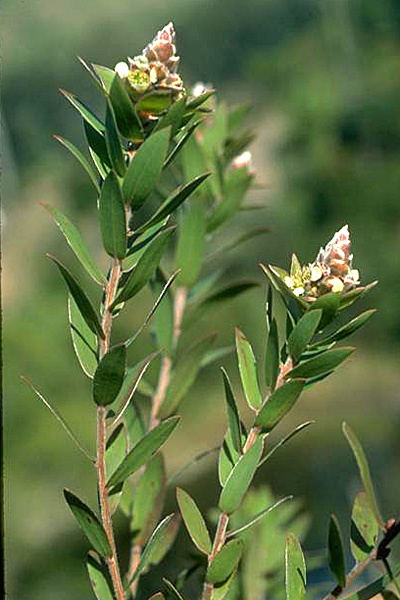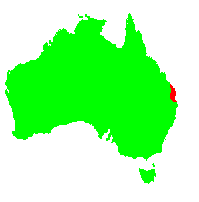General Description:
Leptospermum is a genus of about 83 species, all but three occurring in Australia. They are commonly known as ‘tea trees’ due to the practice of early European settlers of using the leaves of some species as a tea substitute.
Leptospermum speciosum is a small to medium, bushy shrub, usually 1-2 metres high but occasionally reaching 5 metres. The leaves are softly hairy when young, broadly lance to elliptically shaped and up to 30 mm long by 10 mm wide. Clusters of typical tea-tree flowers occur at the ends of the branches in spring. They are white, about 10 mm in diameter with numerous small stamens surrounding the central stigma.
Showy Tea Tree is uncommon in cultivation but would be an attractive addition to tropical to temperate climates due to the unusual arrangement of the flowers. It prefers moist soils in a sunny or lightly shaded location.
Propagation is easy from seed and cuttings taken from hardened, current season’s growth strike readily.
The publication transferred 10 species of Leptospermum, which lack woody fruits that are usually deciduous, into Aggreflorum. Although this revision has been taken up by most state herbaria, it has not yet been accepted in the Australian Plant Census, which ANPSA accepts as the authority on plant taxonomy. For this reason we have retained Leptospermum as the accepted name for the time being.
* Wilson, Peter G. & Heslewood, M.M. (3 May 2023), Revised taxonomy of the tribe Leptospermeae (Myrtaceae) based on morphological and DNA data. Taxon 72(3).

Leptospermum speciosum
Photo: John Wrigley – Australian National Botanic Gardens
 Australian Native Plants Society (Australia)
Australian Native Plants Society (Australia)